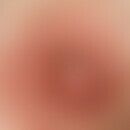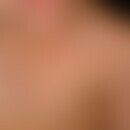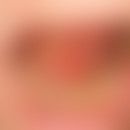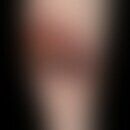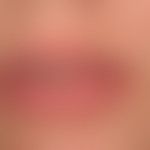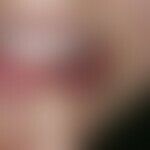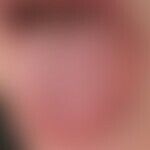Synonym(s)
DefinitionThis section has been translated automatically.
After rupture of a salivary gland duct, usually solitary, only in exceptional cases multiple, glassy, soft, mostly painless pseudocyst with subsequent formation of a foreign body granuloma.
EtiopathogenesisThis section has been translated automatically.
Mostly injury of a salivary gland in case of bite injury or other trauma of the oral mucosa. This results in the formation of an extravasation mucocele with a pseudocystic granulomatous reaction to the mucus extravasated into the tissue (extravasation type).
Less common are mucus retentions due to obstruction of the glandular excretory duct (retention type).
You might also be interested in
ManifestationThis section has been translated automatically.
In clinical studies the age of manifestation is given as between 15-40 years. There are no gender differences.
LocalizationThis section has been translated automatically.
Mainly lip mucosa (mostly lower lip about 35%), also cheek mucosa or ventral edge of the tongue (about 25%) are affected.
ClinicThis section has been translated automatically.
Quite predominantly sudden, single, rarely multiple, reddish-bluish, glassy, soft, hemispherical, about 0.5-1.5 cm in size, protuberant, glassy pale, but also bluish in appearance, usually painless nodule covered by a normal mucosa.
HistologyThis section has been translated automatically.
Cyst (pseudocyst) filled with mucoid substance, surrounded by a connective tissue pseudocapsule with peripheral formation of a foreign body granuloma with mucin-storing PAS-positive macrophages. Superficial subepithelial extravasation may lead to the imitation of a blistering disease.
TherapyThis section has been translated automatically.
Progression/forecastThis section has been translated automatically.
Mucus granulomas generally regress after a few weeks. Exceptionally, they can also transform into permanent, firm, mostly pedunculated nodules (papillomas - see papilloma below), which can be disturbing during chewing.
Note(s)This section has been translated automatically.
Mucous cysts of the floor of the mouth are called ranula. This is a retention mucocele of the sublingual gland.
LiteratureThis section has been translated automatically.
- Arendorf TM, van Wyk CW The association between perioral injury and mucoceles. Int J Oral surgery 10: 328-332
- Baurmash HD (2003) Mucoceles and ranulas. J Oral Maxillofac Surgery 61: 369-378
- Garcia-F-Villalta MJ (2002) Superficial mucoceles and lichenoid graft versus host disease: report of three cases. Acta Derm Venereol 82: 453-455
- Israel M (1996) Use of the CO2 laser in soft tissue and periodontal surgery. Pract Periodontics Aesthet Dent 6: 57-64
- Kolomvos N et al (2014) Surgical treatment of oral and facial soft tissue cystic lesions in children.
Aretrospective analysis of 60 consecutive cases with literature review. J Craniomaxillofac Surgery 42:392-396 - Lattanand A et al (1970) Mucous cyst (mucocele). A clinicopathologic and histochemical study. Arch Dermatol 101: 673-678
- More CB et al (2015) Oral mucocele: A clinical andhistopathological study. J Oral Maxillofac Pathol 18 (Suppl 1): 72-77
- Porter SR et al (1998) Multiple salivary mucoceles in a young boy. Int J Paediatr Dent 8: 149-151
Incoming links (12)
Cyst; Granuloma of the oral mucosa; Mucocele; Mucosal salivary granuloma; Mucous membrane granuloma; Mucus cyst, traumatic; Mucus retention cyst, traumatic; Papilloma; Pseudocyst; Ranula; ... Show allDisclaimer
Please ask your physician for a reliable diagnosis. This website is only meant as a reference.
